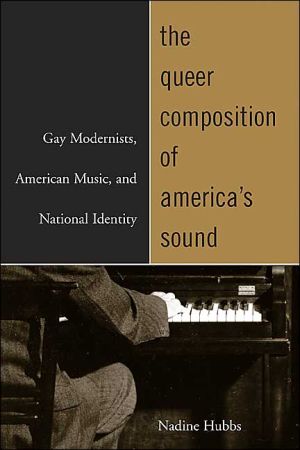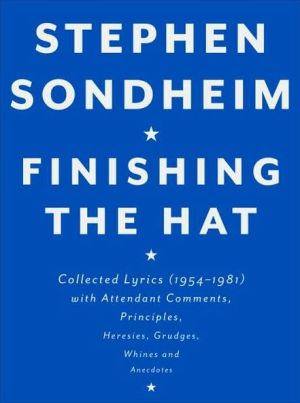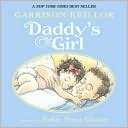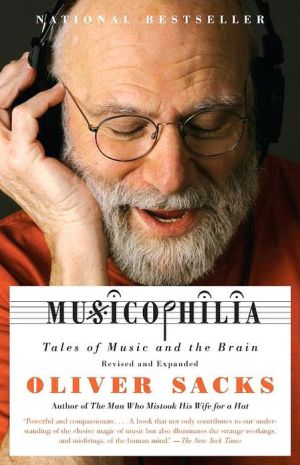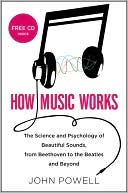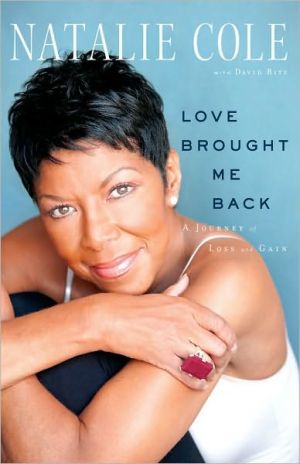The Queer Composition of America's Sound: Gay Modernists, American Music, and National Identity
In this vibrant and pioneering book, Nadine Hubbs shows how a gifted group of Manhattan-based gay composers were pivotal in creating a distinctive "American sound" and in the process served as architects of modern American identity. Focusing on a talented circle that included Aaron Copland, Virgil Thomson, Leonard Bernstein, Marc Blitzstein, Paul Bowles, David Diamond, and Ned Rorem, The Queer Composition of America's Sound homes in on the role of these artists'...
Search in google:
"In this remarkable book, Nadine Hubbs demonstrates that our understanding of modernist American culture will remain impoverished so long as we ignore the gay social networks and patronage and distinctly queer sensibilities and idioms that influenced (to varying degrees) the work of the great modernist composers Aaron Copland, Virgil Thomson, Samuel Barber, Ned Rorem, and Leonard Bernstein, among others. Deeply learned, theoretically sophisticated, and powerfully argued, this is a landmark study, which is sure to inspire a new generation of work drawing together and advancing the insights of musicology, feminist and queer theory, and American cultural history."—George Chauncey, University of Chicago, author of Gay New York"What does music have to do with homosexuality, or homosexuality with music? That is the question Hubbs explores through a breathtakingly original history of the mid-twentieth-century gay American composers who produced "America's sound." Hubbs shows how sexual desire, aesthetic practice, and social identity shape one another and define specific forms of human consciousness. Her recovery of the homosexual roots of American musical modernism is ultimately a study in the sexuality of culture itself."—David M. Halperin, author of One Hundred Years of Homosexuality and Saint Foucault"Nadine Hubbs's courageous and important book seeks both to recover the historical significance of the prewar American modernists and to confront some of the reasons behind the relegation of their work to the closet. Compellingly argued and beautifully written, Queer Composition will no doubt raise controversy, but it will be required reading for musicologists, Americanists, and queer theorists."—Susan McClary, author of Conventional Wisdom: The Content of Musical Form"Hubbs's graceful, shrewd, and nuanced book is the best account yet of the queer sources of much modern American music—and American culture—and a compelling contribution to music history, gay and lesbian studies, and American studies."—Michael Sherry, History, Northwestern University, author of In the Shadow of War: The United States Since the 1930's
The Queer Composition of America's Sound\ Gay Modernists, American Music, and National Identity \ \ By Nadine Hubbs \ University of California Press\ Copyright © 2004 Regents of the University of California\ All right reserved.\ ISBN: 0-520-24184-3 \ \ \ Chapter One\ Modernist Abstraction and the Abstract Art\ Four Saints and the Queer Composition of America's Sound\ Meaning! It is a piece of music, in which I have skillfully eluded all meaning!\ Cyril Vane, Wildean homosexual dandy in John Todhunter's The Black Cat\ It is not what is apprehended what is apprehended what is apprehended what is apprehended intended.\ Saint Teresa, in Gertrude Stein and Virgil Thomson's Four Saints in Three Acts\ The premiere of Gertrude Stein and Virgil Thomson's Four Saints in Three Acts in Hartford, Connecticut, on February 7, 1934, was a major cultural and social event, a watershed spectacle that left its high-bohemian audience cheering wildly and weeping for beauty. The inspiration for such outpourings was an opera, performance, and occasion whose implications remain compelling and elusive even at some seventy years' remove. In the moment, however, audience members scarcely lacked for explanations of their ardent catharsis. Kirk Askew and Julien Levy, important New York art dealers both and leaders in the crying that night, readily explained their tears of joy. Their account suggests they had witnessed a glorious and redemptive birth-of nothing less than the national culture: Askew and Levy wept because they "didn't know anything so beautiful could be done in America."\ "Everyone thought something" of the performance, in the words of one society reporter assigned to the event, "and was earnestly trying to express it." And surely this was key in the work's success: Audience members were not only captivated by Four Saints but impelled to find meanings in it. Indeed, though it presented no linear narrative-nor even clearly interpretable sentences or mimetic sequences-the opera seemed to radiate meaningfulness. Set by Thomson's music and the dramatic scenario by his life partner, the painter Maurice Grosser, Stein's abstract avant-garde language appeared, in its way, more lucid than ever before. To much of the Hartford audience at Four Saints' premiere, as to many readers and critics since, Stein's writing presented itself not as mere nonsense but as "suspiciously significant nonsense." But in February 1934 Stein's words, and the opera in which they were heard, conferred neither mere nonsense nor mere significance: Their effect was nothing short of numinous.\ That the opera inspired such fervent engagement while availing itself to multiple interpretations fostered its use under various identificatory aegises. Or, to put it another way, Four Saints beckoned audiences to make of it what they would, according to their own needs and desires. Thomson had been honing his skills at setting Steinese in ways that optimized this effect. That his prior, "tryout" project, a setting of Capital Capitals for four male singers and piano (1927), reminded the actress Fania Marinoff of a Jewish synagogue, the painter and folklorist Miguel Covarrubias of a Mexican church, and the writer Jean Cocteau of the Catholic liturgy evinces the extent to which Thomson's diatonic idiom could evoke a distinct religiosity even while maintaining an extraordinary blank-screen quality, subject to viewers' projections. Audiences' similar response to Four Saints' open-endedness must have pleased its creators, for it is precisely the receptive stance endorsed by Grosser in his prefatory "Scenario" to the 1948 score edition. "One should not try to interpret too literally the words of the opera, nor should one fall into the opposite error of thinking that they mean nothing at all," he explained: "On the contrary, they mean many things at once." But if interpretive pluralism was the order of the day at the opera's opening, there is nevertheless a reception standard that seems to have operated over the whole range of responses: that of whether or not one "got it," as judged by one's own perception in the matter.\ Olin Downes was among the operagoers who got it-or so he unequivocally indicated in his music column for the New York Times. "The trail of foppishness and pose and pseudo-intellectuality is all over it," wrote Downes of Four Saints' opening (February 20, 1934) in what would prove to be an extended Broadway run. Criticizing the performance by way of its audience, Downes reported that "[e]very snob and poseur in town" showed up to simulate "from a distance and across a decade or two the poses of certain Parisians" at this opera "that was performed with such eclat for the precious." The Times critic was at pains to reveal Stein's text as constituting "far from an innocent or naive creation," as audiences might have assumed from the work's religious theme and its stereotypic staging of African Americans as people of simple faith. On the contrary, readers were warned, the opera presented "a specimen of an affected and decadent phase of the literature of the whites." Downes appears intent to articulate something against Four Saints' creators and audience as a perceived in-group, particularly to expose the alleged falsity of their pretensions (aping 1920s Parisians, they are merely ersatz) and of the opera's ostensible naivete-which masks its true, "affected and decadent," nature. Invoking and interlinking perversion, privilege, and Paris, Downes purported to illumine the nature of this "'opera,' if such it is to be called," and its secretive meanings: I know something of such secrets, he assures his readers-and you need not bother.\ The critic and novelist Carl Van Vechten was another operagoer who clearly deemed that he got it, albeit along very different lines. A queer member of the avant-garde like his friends Stein and Thomson, Van Vechten inscribed some morning-after annotations on Four Saints while still basking in the afterglow of its premiere, at his Hartford hotel. He broached the topic of meaning: "It is unfortunate, perhaps, that I can have very little to say" to people "who seek a key to some more perfect understanding of Miss Stein's text," Van Vechten wrote. He continued, "It becomes more and more evident to me that if appreciation of the text of Miss Stein is not instinctive with a person he never acquires it." Van Vechten thus all but says it outright: If you have to ask, you'll never know. Somewhat comparably, the press agent Nathan Zatkin "comforted the uncomprehending" on opening night in a manner Steven Watson recently characterized as "sly": "Either you get it or you don't-and, really, you shouldn't feel ashamed if you don't," Zatkin counseled. Whether or not intended "slyly," Zatkin's response, like Downes's, haunts an intriguing question: Apropos Four Saints, who might have greater reason to feel ashamed-those who get it, or those who don't?\ That notions of shame, or decadence, or contrived innocence should arise at all in proximity to Four Saints and its premiere already suggests a circulation of meanings beyond those attributable to "pleasurable nonsense"-to invoke the terms in which the opera is typically glossed. And we might wonder what could inspire such notions in relation to a staging of (not just four but) nearly thirty Spanish Catholic saints, real and imaginary, named and anonymous, in song and movement depicting daily devotions, a country picnic, fishnet mending, and the witnessing of visions (among other things), all to represent in three acts their earthly life. A further, apparent bonus act bestows an afterlife no less sanguine, a brief postlude in which the saints reminisce together in heaven. So, in addition to the innumerable pleasant acts performed by its personae, the opera itself presents four acts-and thus (by either calculation) proffers an abundance of saintly acts beyond the three announced by the title, and required by the Vatican for saintly recognition. These acts' pageantry is set throughout by strikingly lucid tonal music neoclassically evoking Anglican chant in the same breath as Yankee hymns, and nineteenth-century American music-hall ditties alongside operatic gestures redolent of Mozart, Bizet, and Puccini.\ Four Saints in Three Acts was a landmark collaborative creation of U.S. modernist artists engaged in early-twentieth-century efforts to establish a distinctly and genuinely American voice in transatlantic high culture. This chapter examines the opera at close range and in historical perspective, as an artistic object and event that has stood continuously since 1934 as a preeminent example of illegible modernist abstraction, and one that issued from a heterosocial and intergenerational artistic marriage of lesbian and gay Americans living and working in that "capital of hedonism" that was interwar Paris. It particularly interrogates the meanings that have attached to this putatively nonsensical work, in both production and reception, and the fertile scrutations that have attended Four Saints in all its legendary inscrutability. These interrogations highlight the queer expressive potential of artistic abstraction within the homophobic context of twentieth-century U.S. culture, and the crucial confluence, within that context, of queer lives and culture with artistic, particularly musical, activity and culture. The discussion here also raises questions that are explored throughout this book-concerning abstraction and identification; national, artistic, and sexual identity; and the predominance of queer artists in the twentieth-century creation of an American voice in concert music. More immediately this discussion illuminates the paths of influence and interaction, collaboration and rivalry, that were forged in Manhattan and Paris in the interwar years and led to the remarkably queer composition of America's sound.\ As a notoriously abstract production of the modernist avant-garde, Gertrude Stein's Four Saints libretto evades conventional meaning and likewise resists the reigning scientific and psychological apparatus of identity-that is, of social, sexual, racial, and other constructs of classification and normalization-that flourished in early-twentieth-century America and Europe. Indeed, identity evasion is a frequent theme in recent Stein criticism, which often reads Stein's texts as resisting (in Sidonie Smith's words) "the evolutionary story, the self-conscious narrator, the identification between ... narrator and ... subject, the unitary voice"-in short, "all the rhetorical and narrative components of a patriarchally inscribed identity." Stein's (negative) relation to identity is central in Four Saints, as it is in her modernist literary project generally: "Now identity remembers and so it has an audience and as it has an audience it is history and as it is history it has nothing to do with the human mind," she writes in The Geographical History of America; Or, The Relation of Human Nature to the Human Mind. Since identity, or human nature, according to Stein, "has nothing to do with the human mind," and masterpieces are rooted precisely "in the human mind," identity has no place in a masterpiece.\ Speaking of masterpieces in the wake of dada and anti-art, anti-masterpiece developments, Stein (1874-1946) might appear as if clinging to nineteenth-century aesthetic values. But in fact her stance is bracingly modern, for what she insists on by these statements is a reversal of the values attending drama and literature: Stein places the inner experience of the spectator or reader-that of "the human mind," with its continuous sense of present moments-over and above the narrative representation of a past event, an outer reality that is a matter of "history." In contrast to the nineteenth century's championing of an artwork conceived as absolute and autonomous, Stein conceives of the artistic object and its observer in terms of mutual interdependence. In her avant-garde work Stein therefore focuses her creative efforts not on crafting narratives or histories, but on fully expressing "presentness," in congruity with that of the perceiving mind, locus of all masterpieces.\ Stein's definition of a masterpiece fixes on its ability to convey the essence of a subject by nonnarrative-that is, nonlinear and atemporal-means. Her corresponding and self-consciously cubist notion of landscape theater, of which Four Saints in Three Acts stands as the most distinguished example, is one of "eternity as an unrolled filmstrip, a simultaneous presentation of an image in all its possible projections into time" in which "everything that has been and will be is there, and merely needs to display various angles of itself." Thus is Four Saints, in Daniel Albright's reading, "an opera that tries to be a picture-an opera in which the text defies discursivity."\ We might further note that in creating an opera text that tries to be a masterpiece, the text's author defies cultural precepts concerning sex and gender identity. Stein's defiance here is evident from her presumptions to the (cross-) gendered role of "master." And it is likewise in a well-known passage from her notebooks: "Pablo [Picasso] & [Henri] Matisse have a maleness that belongs to genius. Moi aussi, perhaps." In claiming "maleness" (here a marker of gender qualities) for herself, Stein flouts her culture's rules for sex-gender mapping, in language and in life. But by the same gesture she accepts and reinforces the fundamental terms of the cultural norm, that is, the gendered definition of genius by which she-failing her bid for special exception-would be excluded from the running.\ About 1907, the year when she met her soon-to-be life partner Alice Toklas, Stein had come under the influence of Otto Weininger's just-published book Sex and Character. Theorizing that all humans are bisexual, the Viennese psychologist placed homosexuality within a relatively nonpathological schema: It is easy to imagine how this aspect of the work might have appealed to the queer-identified Stein. But Weininger also expounded on genius, writing that a female genius "is a contradiction in terms, for genius is simply intensified, perfectly developed, universally conscious maleness." That Stein embraced such writings surely had to do with the enormous cultural currency of psychology at this time among Europeans and Americans of Stein's privileged (haut bourgeois) class and educational background-not to mention her specialized training in the field at Radcliffe College (under William James) and at Johns Hopkins Medical School. Inevitably there would also have been a faute de mieux factor: With male superiority and gynophobia inhering in the very foundations of the culture, what were the chances of eluding them? Stein's response was not to give up her principal aspiration-to be a genius.\ \ Continues...\ \ \ \ Excerpted from The Queer Composition of America's Sound by Nadine Hubbs Copyright © 2004 by Regents of the University of California. Excerpted by permission.\ All rights reserved. No part of this excerpt may be reproduced or reprinted without permission in writing from the publisher.\ Excerpts are provided by Dial-A-Book Inc. solely for the personal use of visitors to this web site. \ \
Introduction : composing oneself11Modernist abstraction and the abstract art : Four saints and the queer composition of America's sound192Being musical : gender, sexuality, and musical identity in twentieth-century America64Intermezzo : my dear Freddy : identity excesses and evasions chez Paul Bowles1033A French connection : modernist codes in the musical closet1174Queerness, eruption, bursting : U.S. musical modernism at midcentury152Coda : Composing oneself (reprise)175
